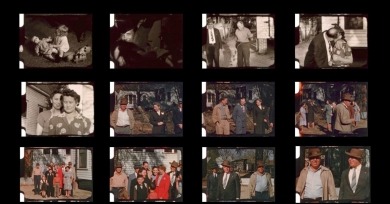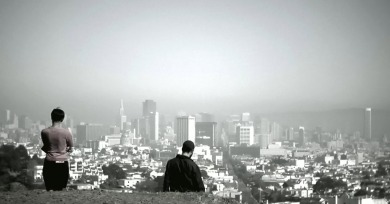American ID
This column features essays about films made in the twenty-first century that deal explicitly or implicitly with matters of American identity.
The crime remains so notorious in the town that, at one point, a longtime neighbor who resides by the now-shuttered family grocery refuses to discuss it with the director or even appear on camera.
As a 2016 film about the 1950s studio system, Hail, Caesar! reminds us that Hollywood has always been a place of myth and self-congratulation, a dream factory that feigns progressiveness while serving national and hegemonic interests.
The story of American identity in the 21st century cannot be told without acknowledging that social media has shifted the ways we talk, interact, and forge communities.
It is a quiet but influential work in its depiction of blackness, of Black romance and alterity in a shifting urban landscape. The film is both elegiac and symbolic, yet precisely located in San Francisco and true to the early 2000s.
Jimmie cannot lay claim to the house as he wants to, cannot stabilize and contain his feelings about his family and himself. But the greater loss is that the city has no place for Mont’s theater.
The American Gothic, particularly as practiced by literary forebears Nathaniel Hawthorne and Washington Irving, tends to orbit around concepts of evil, madness, and the supernatural. But ultimately no monster ever compares to humans driven by fear.





